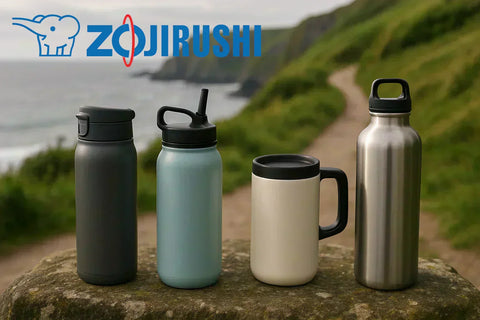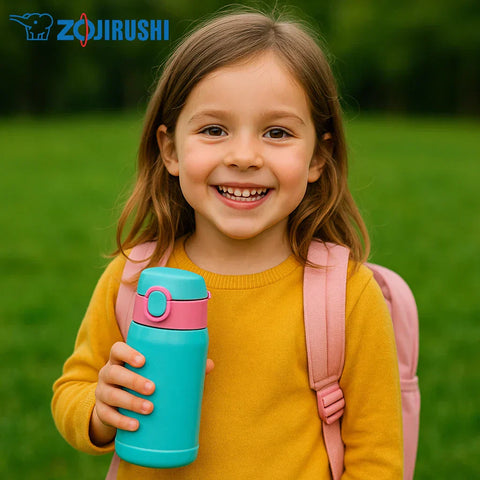When I First Started Looking for the Right Water Bottle
When I first started looking for the right water bottle, I didn’t think it would feel like such a personal decision. It all started when I decided to lose some weight and changed my diet. I began drinking around 3 litres of water a day. At the time, I spent a lot of time driving for work, and my car was constantly full of empty 1.5L bottles from LIDL. That amount of plastic always bothered me.
I thought I found a solution: I bought a cheap 1-litre plastic flask (you can guess where), and a big 5 or 6 litre bottle of water to keep in the boot. My plan was simple — fill up the small one from the big one and keep it in the front seat. All I needed, I thought, was a bottle that wouldn’t leak on the upholstery.
But I quickly realised I was wrong.
First, the lid was awkward — opening it with one hand wasn’t too hard, but closing it properly on the first try? Not likely. Then I left it full overnight. The water in the morning had a weird taste — and if you forget it in the car on a hot day? Even worse. That first bottle ended up the same place as all the old 1.5L bottles — but unlike those, this one can’t even be recycled. Now it’s just sitting in the garage.
So, the second time, I knew better. The choice between plastic and stainless steel isn’t just about practicality. It’s about health, sustainability, taste — and yes, lifestyle.
If you’ve ever wondered which type of bottle actually fits your life best, or if you’re trying to cut down on everyday plastic, this article is for you. I’ll share what I’ve learned by testing both — and help you make the right choice.
Why This Matters — And What People Forget
To be honest, I used to think plastic bottles were fine. Cheap, lightweight, available everywhere. I’d grab whichever was closest. But after just a couple of weeks, the smell, the stains, and that odd taste started to creep in.
Then I read about microplastics. Scientists have found traces in drinking water, food — even in human blood. That was the turning point for me.
Now, here’s what I focus on when choosing a bottle:
-
Health – What’s actually getting into my drink?
-
Sustainability – Am I adding to waste or helping reduce it?
-
Practicality – Is it easy to use daily?
-
Taste – Does the drink stay clean and fresh?
Stainless vs Plastic – Comparison Table
| Feature | Stainless Steel Bottle | Plastic Bottle |
|---|---|---|
| Safety | ✅ No harmful chemicals | ⚠️ Can leach toxins when heated |
| Durability | ✅ Long-lasting, sturdy | ❌ Easily cracks and wears out |
| Insulation | ✅ Keeps hot/cold for hours | ❌ No thermal protection |
| Taste | ✅ No flavour distortion | ⚠️ Often affects taste |
| Weight | ⚠️ Heavier than plastic | ✅ Very lightweight |
| Maintenance | ✅ Easy to clean, no odours | ⚠️ Absorbs smells |
| Eco-friendliness | ✅ Recyclable, long lifespan | ❌ Often ends up in landfill |
My Experience — Work, Parenting & Travel
I’ve used both types of bottles in daily life: at work, on school runs, hiking in Wicklow, and just at home.
-
At the office:
-
A plastic bottle started smelling like a mix of coffee and soap after a week — even with daily washing. With the stainless steel Zojirushi bottle, my drink always tasted clean. Honestly, even my tea felt better.
-
With my daughter:
-
Kids are tough on their gear. Her plastic bottle cracked after one drop. The Zojirushi Straw Tumbler held up without a problem — and she liked the colour.
-
On the road:
-
I needed a bottle that wouldn’t leak and kept my drink hot. The Travel Mug from Zojirushi became my go-to — no spills, and my coffee stayed warm for hours.
Safety — Especially for Children
“BPA-free” sounds reassuring, but it doesn’t guarantee safety. Even BPA-free plastics can release chemicals, especially if scratched or exposed to heat.
Stainless steel doesn’t have that issue. It doesn’t absorb smells, doesn’t react with your drink, and keeps the taste fresh. That sealed the deal for me.
If you’re preparing lunchboxes or school bags, I highly recommend Zojirushi’s For Children collection. Safe, reliable, and easy to clean.
Need care tips? Check out this guide: How to clean a stainless steel water bottle.
Sustainability — It’s More Than Recycling
Sad truth: most plastic bottles don’t get recycled. Even the ones you carefully rinse and sort.
Stainless steel:
-
Lasts for years;
-
Is fully recyclable;
-
Won’t break down into microplastics;
-
Helps reduce single-use habits.
A friend once told me, “Since I got my Zojirushi, I stopped counting how many bottles I didn’t need to buy.” Same here.
And if you work in a company that cares about sustainability — Zojirushi bottles make excellent corporate gifts. They even offer bulk orders for teams.
Which Zojirushi Products I Recommend
Here’s what genuinely worked for me:
-
✅ Bottles – perfect for daily hydration
-
✅ Mugs – one stays on my desk
-
✅ Travel Mug – ideal for car journeys and commutes
-
✅ Straw Tumblers – my daughter’s favourite
-
✅ Food Jars – keep my lunch warm in winter
You’ll find all of these in the Best Water Bottles in Ireland – 2025 Buying Guide.
FAQ — Real Questions
Q: Are BPA-free plastic bottles safe?
A: They’re better than older plastic, but still degrade over time and may affect taste.
Q: Can I pour hot drinks into stainless steel bottles?
A: Absolutely. I use mine for tea every day — the taste stays clean.
Q: What if I drop it?
A: It might dent, but it won’t crack. Mine fell on concrete and still works.
Q: What’s best for a school bag?
A: Straw Tumbler — no leaks, easy to open, and child-approved.
Q: How do I clean it properly?
A: Warm soapy water daily. Deep clean once a week. See the care guide.
Final Thoughts — Honest and Simple
I never expected my view on bottles to change so much. But switching to stainless steel made a noticeable difference every day. Clean taste. No leaks. No more plastic.
A small change that became a habit.
👉 Explore all stainless steel bottles at Zojirushi.ie — and try it for yourself.
Still unsure? These guides might help:
-
📘 Thermal Mugs vs Regular Mugs – What’s the Real Difference and Why It Matters
-
🧊 What Is a Vacuum Flask Bottle and How Does It Differ from a Thermos?
Thanks for reading. Let’s ditch plastic — one bottle at a time.


